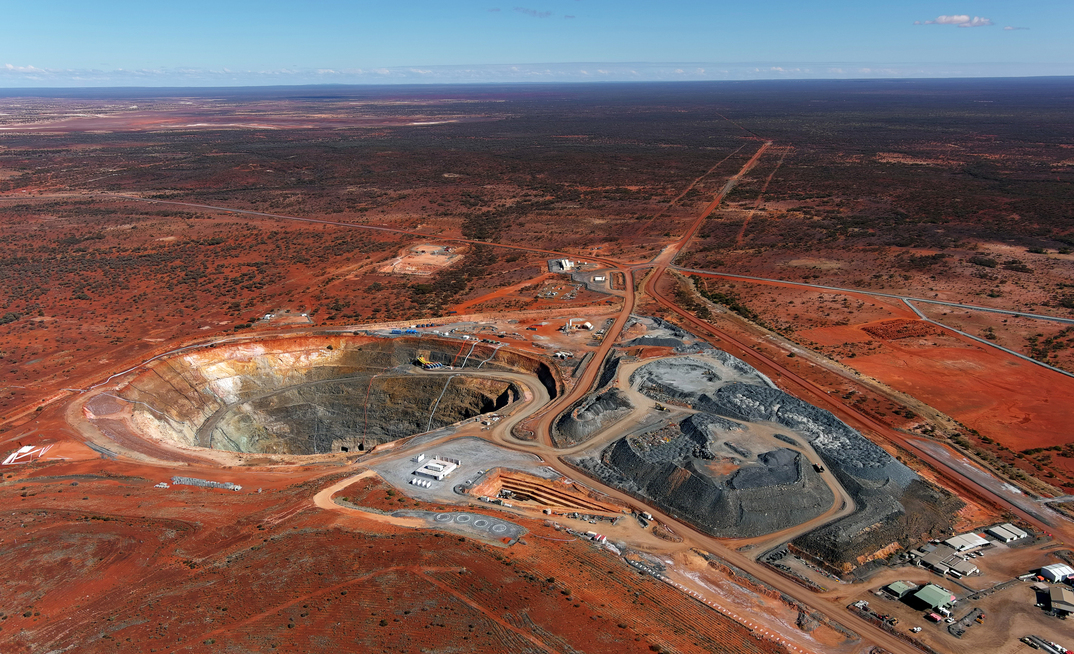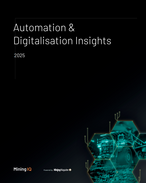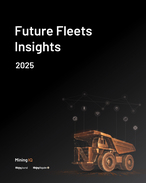Replacing a diesel underground mining fleet with a battery-electric fleet is technically and financially feasible, a study into converting IGO's Cosmos mine has found.
The study, by IGO, mining services provider Perenti and major mining supplier ABB concluded that IGO's Cosmos underground nickel mine would have stacked up as an all-electric option, at least to a pre-feasibility study level.
Sadly, IGO pulled the plug, first on the shaft that would have made it possible and then on the mine itself. At least for now.
The study found existing battery electric haulage and loading technologies would have matched the productivity of the existing Cosmos diesel mobile fleet; the estimated cost to electrify the mine was not prohibitive over its estimated mine life; and the total power consumption of a fully electrified fleet would have been less than that of the equivalent diesel operation due to substantial savings on mine cooling and ventilation.
YOU MIGHT ALSO LIKE
That last point highlights something often overlooked in the whole mine electrification debate: the benefits to those working in close proximity to electric equipment. It is generally – drills excepted – quieter and cooler than a diesel alternative.
Perenti head of mining electrification and technology Darren Kwok told Australia's Mining Monthly that it was important to note that it was market factors that led to Cosmos being shuttered.
"If the market hadn't changed we would have moved to a detailed feasibility study," Kwok said.
Sadly, that may have to wait a while.
What the partners have delivered is one of the very first pre-feasibility level analyses of the technical and economic aspects of converting an Australian underground mine from diesel equipment to battery-electric equipment.
What was considered
The study covered:
- Mine design optimisation for electric operations;
- The production and operating philosophy;
- Fleet selection;
- Power distribution and electrical infrastructure design;
- The electrification system and battery management;
- An analysis of environmental, social and governance factors as well as safety impact; and
- Modelling capital and operating costs.
Cosmos was chosen because its previous owner Western Areas decided to put in a 1000m haulage shaft. This would have reduced the truck haulage routes to distances more compatible with existing battery technology in the underground mining market.
Nevertheless, it was an existing mine developed with the capabilities of diesel in mind.
The study partners started with three key questions:
- Can a battery electric mining fleet replace an existing diesel fleet and be as productive?
- What cost difference would be associated with the transition to and operation of an all-electric fleet?
- How long would it take and what would be needed to transition an operating mine from fully diesel to fully electric without impacting operations.
Those questions immediately raised a number of challenges when it came to working with battery-electric vehicles.
Firstly, there was a lack of experience and data on battery electric fleets.
Because the BEV industry is still quite new the skills to operate, maintain and design the equipment need to be developed.
Capital and operating costs are higher. On the capital front, there is the high initial cost of BEVs and the charging infrastructure. Location-specific operating costs, such as the cost of power at remote sites, must also be factored in.
Installing and upgrading the necessary electrical infrastructure can be complex and costly, especially in the tight confines of an underground mine.
Is the mining design right? The flatter the better seems to be the way forward.
Technology is evolving rapidly, particularly in the battery chemistry space, which makes it hard to evaluate future options.
Regulation has not kept pace with technology either, so evaluating future options is harder.
Equipment options
One of the benefits underground miners have over their open pit colleagues is that there is already some BEV equipment available.
Major original equipment makers such as Epiroc and Sandvik have been producing underground mining BEVs for almost a decade.
Even so there are fewer OEM BEV choices comparable to the standard operating fleet in Australia of 60t trucks and 20t loaders.
In the ancillary equipment space the options are greater because OEMs have been producing them for longer.
According to the study, there is also a wide choice of BEV light vehicles with diesel conversions and designed-for-purpose BEVs available. The study qualifies that by saying that most of those vehicles are still being trialled and have yet to be proven in the harsh underground operating environment.
The study decided that Sandvik's 65t BEV truck, combined with an 18t loader – there are not any 21t BEV loaders available from OEMs at the moment – would be the best way forward. It found all the ancillary fleet could be bought in a BEV format from established OEMs such as Normet and MacLean. On the light vehicle front it deemed a mix of Toyota Landcruiser BEV conversions with custom-built BEV light vehicles would do.
Two 65t BEV trucks would replace the haulage capacity of Cosmos' two planned 63t diesel trucks.
The BEVs would use battery swapping stations, with swaps occurring every three to five haul cycles and taking eight to 10 minutes.
Due to the conservative speed assumptions used in the modelling the planned loading fleet of three diesel loaders would be replaced with four BEV loaders. It was assumed those loaders would also use battery swapping stations and would require a fresh battery two to three times a shift.
Perenti has experience with the Sandvik truck. It has been trialling one at Sunrise Dam.
Sunrise Dam experience
The conventional wisdom is that battery electric trucks do not do declines. Well, at least not on one battery charge.
Kwok said Perenti had been running a Sandvik TH665B at the mine in a production capacity.
That 65t BEV truck is operating alongside 11 diesel trucks.
"Sunrise Dam is a reasonably deep mine," Kwok said.
"We've learnt enough to make it productive."
Perenti has the battery electric truck completing a full cycle – that is, travel down the decline, get loaded and come back up the decline – before a battery swap.
The battery swap takes, on average, eight minutes.
The diesel trucks it works with can continue driving up and down the decline for an entire shift without needing to refuel.
However, the TH665B holds its own because it partially recharges its battery while braking on the descent and is faster than the diesel trucks coming up the decline with a full load.
Perenti has two batteries for the TH665B that it swaps between each cycle.
Does it mean a BEV truck is a straight swap for a diesel one? No. Remember, this is one BEV truck working in concert with 11 diesel ones.
"It's around managing the use of the machine," Kwok said.
"In some mines it might outperform some diesel trucks. In other mines diesel will be better. That's why it's a trial."
Planning
Ideally the partners would have liked to have gone with a mine designed with BEV in mind.
Cosmos was not that. It is an existing mine with a bit of sunk cost already in place.
Timing also played a part. The plan was to make the swap to BEVs in 2025 and 90% of the Cosmos development would have been completed by then.
That meant the focus went to mine ventilation, battery management and charging infrastructure.
"If you were to fully optimise an electric mine you would have thought about the plan from the beginning," Kwok said.
However, there was another advantage to the Cosmos exercise.
Kwok said it gave an opportunity to understand how introducing battery electric equipment affected the full system.
"The planning comes on where to replace that battery to best manage the tramming distance.
"The shallower mines will require fewer battery swaps.
"One of the reasons we did the study with IGO was to better understand the whole system.
"You have to think about how all the cycles interact.
"There are so many variables at play that you could affect one part and not affect other parts of the cycle.
"If you want to maximise the value of electrification it's a whole of system rather than a per-cycle view."
Cosmos was also unique because of the shaft that was being installed.
"We will use this data in the future for greenfields projects," Kwok said.
Clearing the air
There are several benefits to using battery-electric equipment, not least of them being the removal of the particulate emissions and heat that diesel-fuelled equipment generates.
Both proved valuable in the Cosmos context.
Cosmos experiences a fair amount of rock heat, so it has to chill its ventilation air to maintain a suitable working environment underground.
The Cosmos ventilation system was already well established and designed for a diesel fleet, which limited the cost savings that would come from fleet electrification.
The vent fans were not variable drive either, so there was not as much flexibility to save electricity.
It was also determined that a BEV transition would still require sufficient ventilation to accommodate the diesel equipment during the changeover period. that meant only a 7% reduction in primary airflow volume was achievable.
However, there were significant reductions in the cooling needed. The bulk air cooling plant's capacity could be reduced from 6 megawatts to 4.5MW and the cooling would only be needed for two months of the year instead of five.
And while the diesel case for Cosmos' expansion into two additional areas required two primary fans, the BEV case let two existing primary fans be repurposed with a fan overhaul and motor upgrade.
Ventilation modelling showed the reduced airflow requirements of the BEV case would allow the adoption of smaller 45 kilowatt auxilliary fans for secondary ventilation, compared to the 55kW fans needed for the diesel case.
Modelling of blast fume clearance times showed re-entry times would increase by two minutes for development blasts and by five minutes for production blasts.
ABB business line manager mining Max Ludtke said the study showed there could be many benefits to electrifying a mine.
"Mines can become even more energy efficient with vastly reduced levels of carbon dioxide emissions, while at the same time staying competitive and ensuring high productivity, in part due to the higher tramming speeds of electric loaders and trucks compared to the diesel equivalents," Ludtke said.
"We have been investing in electric mining transport through our eMine portfolio for several years now and have seen the technology go from strength to strength.
"We expect the outcome of this study to provide more momentum for electrification so our industry can continue to make real progress in lowering its emissions while improving the health and safety of our people."
IGO acting chief operating officer Chris Carr said the electrification of mining fleet would be pivotal in the industry's commitment to advancing toward net-zero emissions.
"In addition, the removal of diesel from underground operations will eliminate diesel particulate matter and other diesel exhaust gases, resulting in improved working conditions and better health outcomes for employees," Carr said.

























